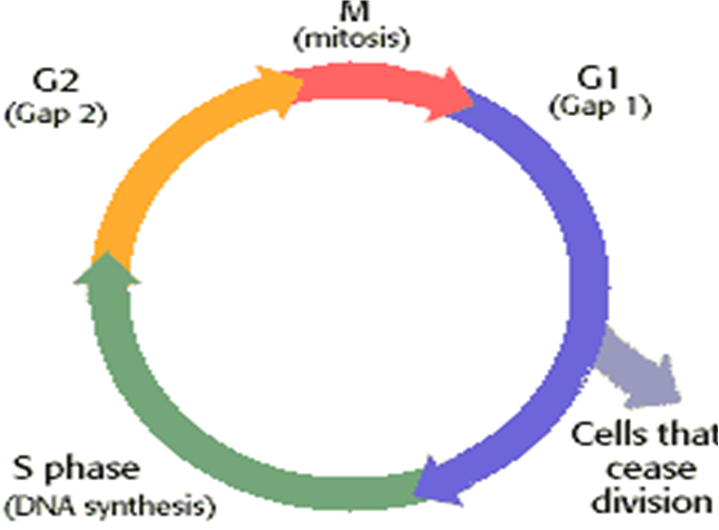 Multiple Choice Questions
Multiple Choice QuestionsThe correct sequence of different phases of cell cycle is
S - G1 - G2 - M
G1 - S - G2 - M
G2 - S - G1 - M
G1 - G2 - S - M
B.
G1 - S - G2 - M
The complete cell cycle contains a sequence of phases which are
(a) Interphase which is further subdivided into G1-phase or postmitotic gap, S-phase or synthesis phase and G2-phase or premitotic gap respectively
(b) Dividing phase or M-phase (mitotic or meiotic phase) which comprises karyokinesis and cytokinesis.
So, the correct sequence of phases in cell cycle is
G1 S G2 M

Animals are classified into hierarchical groups in which one of the following, the largest number of species is found?
Genus
Order
Family
Cohort
The blood vessel which supply oxygenated blood to cardiac tissue is
coronary artery
coronary vein
coronary sinus
pulmonary vein
Vegus nerve is a
mixed X cranial nerve
mixed XI cranial nerve
mixed X thoracic nerve
sensory X cranial nerve
Third and fourth ventricles of the brain are connected by
aqueduct of Sylvious
foramen of Monro
foramen of Magnum
corpus callosum
All or none law is not applicable for
whole skeletal muscle
single skeletal muscle fibre
whole cardiac muscle
single smooth muscle fibre
Numerical aperture of microscope lens is expressed by
angular aperture only
refractive index only
both angular aperture and refrative index
wave length of the light used
Which one of the following is not true for enzymes?
They act on a specific substrate
They are made up of fat and sugar
They act at a specific temperature
They act at a specific pH
Living. cells placed in isotonic solution (0.9% saline) retain their size and shape. This is based on the concept of
osmosis
diffusion
facilitated diffusion
transpiration
